FIGURE 1
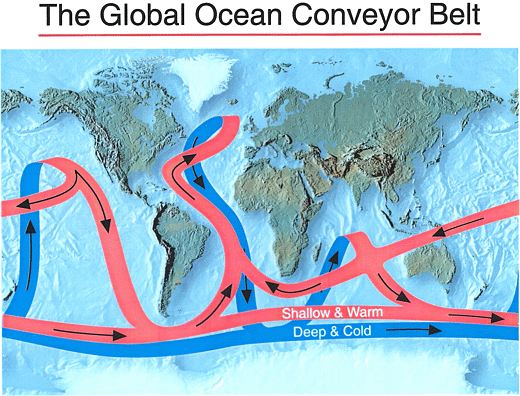
Thermohaline circulation has been viewed as a conveyor, globally linked with overturning in the high N Atlantic. The idea excites imagination.
FIGURE 1

There are at least two things wrong.
First, the Greenland Sea is not the northern terminus, while the Arctic Ocean only supplies varying discharges of freshwater. Rather, 6 to 8 Sv of Atlantic water enter the Arctic via the Barents Sea and Fram Strait and a third conveyor path returns about 1 Sv Pacific water via Bering Strait. Within the Arctic, processes involving both sea ice and shelf/basin exchanges profoundly affect and are affected by conveyor loops. The message is the Arctic is a fully interactive player on the global conveyor, as highlighted in Fig 2 (where some of the high latitude pathways are after Mauritzen, 1996, Deep-Sea Res., and subtropical pathways are from Rahmstorf, 1997, Nature).
FIGURE 2
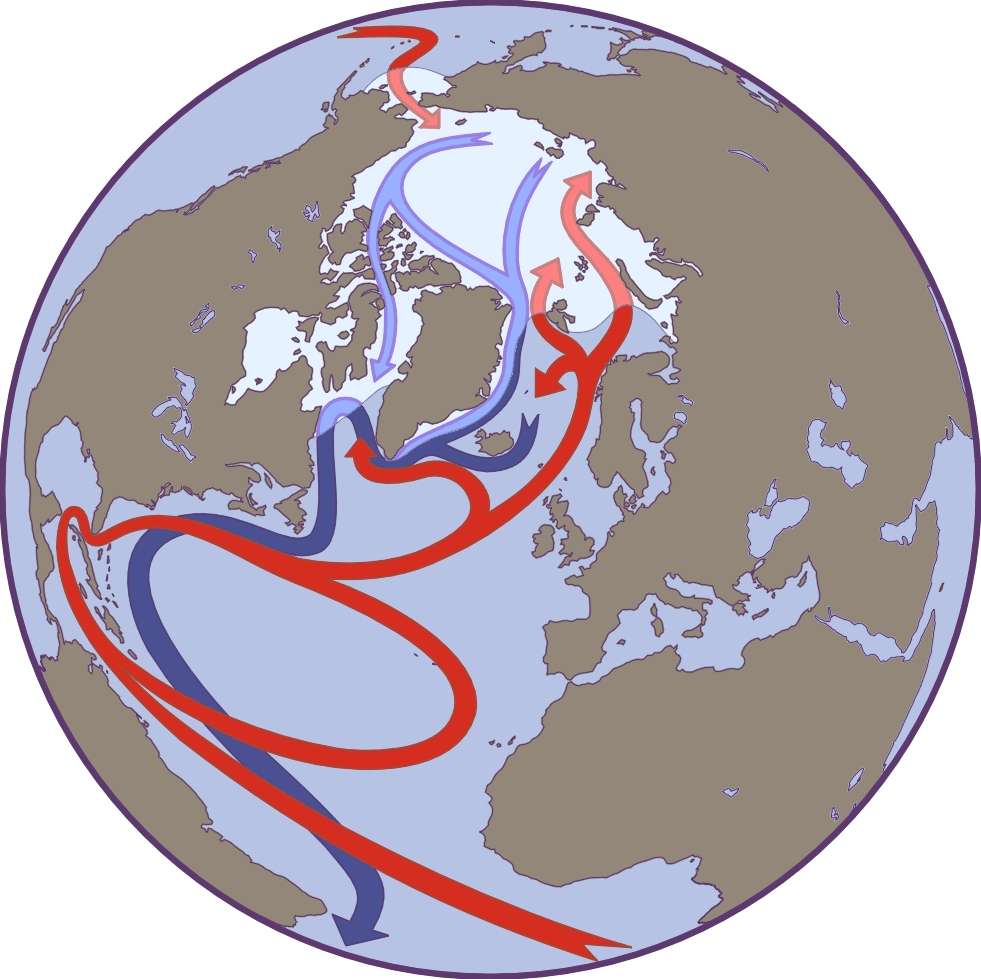
Second, we ask fundamentally: What makes the conveyor "go"? Classically we appeal to buoyancy loss leading to sinking and ejecting plumes. It is a little like trying to push on a string. That's classical mechanics: seeking forced response to applied forcing which has been the basis for ocean dynamics. The problem is we only play with "half a deck" -- dynamically. The other "half" is that the oceans -- just as any dynamical system with vastly more degrees of freedom than we can ever treat -- exhibits statistical mechanical forces due to gradients of entropy, S, with respect to flow configurations (or w.r.t. anything else), where.

Statistical mechanics is expressed, in part, when eddies in the presence of bottom topography force mean flows ("neptune"). Resulting neptune circulation resembles abyssal conveyor flows, allowing sunken watermasses to "go for a ride" rather than "push the string". We learn to view the conveyor in two linked parts. Surface forcing induces sinking in vertical part while entropy gradient forcing sustains lateral circulation, evacuating newly formed deepwater, feeding back on vertical exchange.
A curious question arises. If eddies keep the conveyor going even if overall climate changes (presuming the statistics of eddies don't change too much), then does the conveyor act as an agent for or against climate change? The answer comes in two competing/complementing mechanisms.
What are mechanisms for change? While vertical processes are influenced by altered surface forcing, lateral circulation is more persistent than modern theories or models suggest. The conveyor more effectively evacuates NADW (this is not overturning streamfunction!) and conveyor branches also sweep beyond Nordic seas and through the Arctic. Is the climate system more persistent? Maybe not. Effective lateral circulation can enhance sensitivity of vertical processes. Thus far we don't know which "wins".
FIGURE 3
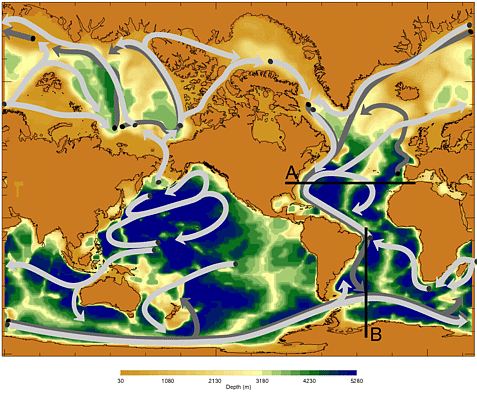
Preliminary efforts use a model with variable grid spacing from 200 km to 14 km, with 31 levels. Grid geometry (Fig. 3) is designed to allow faithful treatment of an interactive Arctic. Initialized with climatological T and S, the model is forced with climatological windstress and (for testing) restoring SST and SSS. Integrated to quasi-equilibrium (300 yr) we've used tracer releases and bundled flow vectors to construct schematically principle conveyor branches (Fig. 3).
A zonal section (Fig 4) across the North Atlantic ("A" on Fig 3) shows the important property that conveyor branches remain tightly bound against continental margins. This is a consequence of neptune more than buoyant plume dynamics.
FIGURE 4
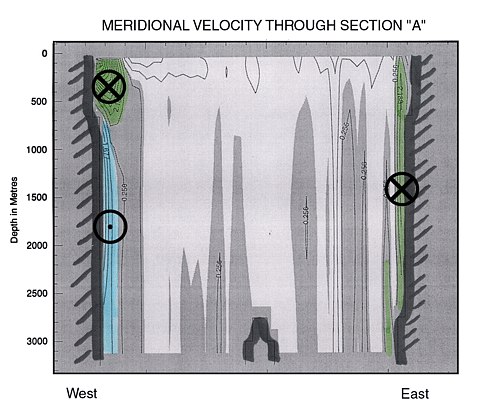
And tracers are fun! A tracer was imposed to "tag" the upper N Pacific in order to follow routes back to the N Atlantic through the S Atlantic. Vertical section ("B" on Fig 3) shows three distinct cores of N Pacific water in the S Atlantic (Fig 5). Two shallower cores have travelled through Drakes Passage and the Indonesian Passage. A third (deep core) is water from Bering Strait, which mixed and sank in the Arctic and Greenland Seas, and was carried with DWBC.
FIGURE 5
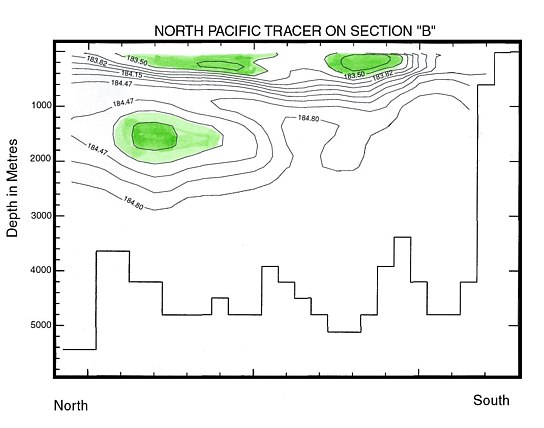
to Planetwater |
 |
or | more research |
 |